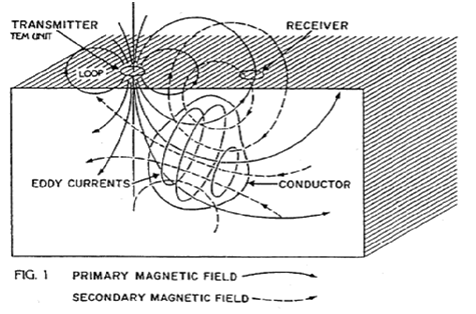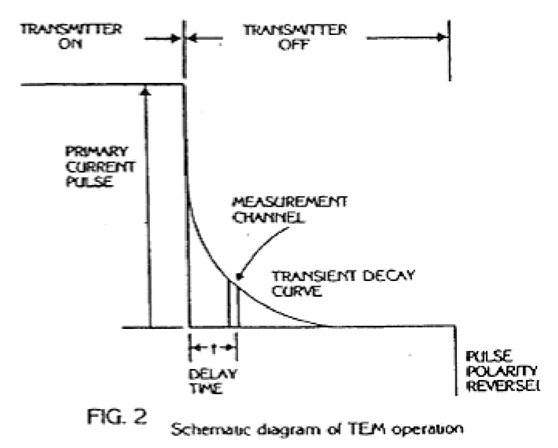Transient EM(TEM) method and common configurations
What is Transient EM(TEM)?
The principle of Transient E.M.(TEM) method of geophysical prospecting is very simply, that current flowing in a a transmitter loop sets up a magnetic field which when switched off induces eddy currents to flow in any good electrical conductor in the ground. These eddy currents set up a secondary magnetic field which can be detected by a receiver loop as time-dependant decaying voltage.

How is TEM used?
The recording of the “transients” is a means of detecting conductors in the ground. The decaying transient can be described by a number of measurement channels recording the voltage at various delay times during the “quiet time” between current pulses.
The character of this decay (duration, amplitude. Etc.) depends on the conductivity, shape and size, and depth and attitude of the conductor and its position with respect to the receiver loop and can be used to provide information on all this factors.
A particular advantage of transient E.M. systems over continuous waves systems is the fact that the measurement are taken when the transmitted fields are switched off. This means that the sensitivity of the receiver can be a maximum to record the transient voltages only without having to cope with the much greater signal strength of the transmission field. It also means that a greater variety of loop configurations can be used including having the receiving loop in the same places as the transmitter loop for maximum signal reception.

Some of the common configurations:
1. Coaxial loop geometry
Advantages: Convenient, strong signals, no blind zones
Disadvantages: Complex anomaly shap
2. Separated Moving Loops
Advantages:Less confusing anomaly shape
Disadvantages: Weaker signals, less convenient
3. Large Fixed Loop Geometry
Advantages:Reduced rate of fall-off. Constant source field
Disadvantages: Blind zones. Dependant on location of Tx.




